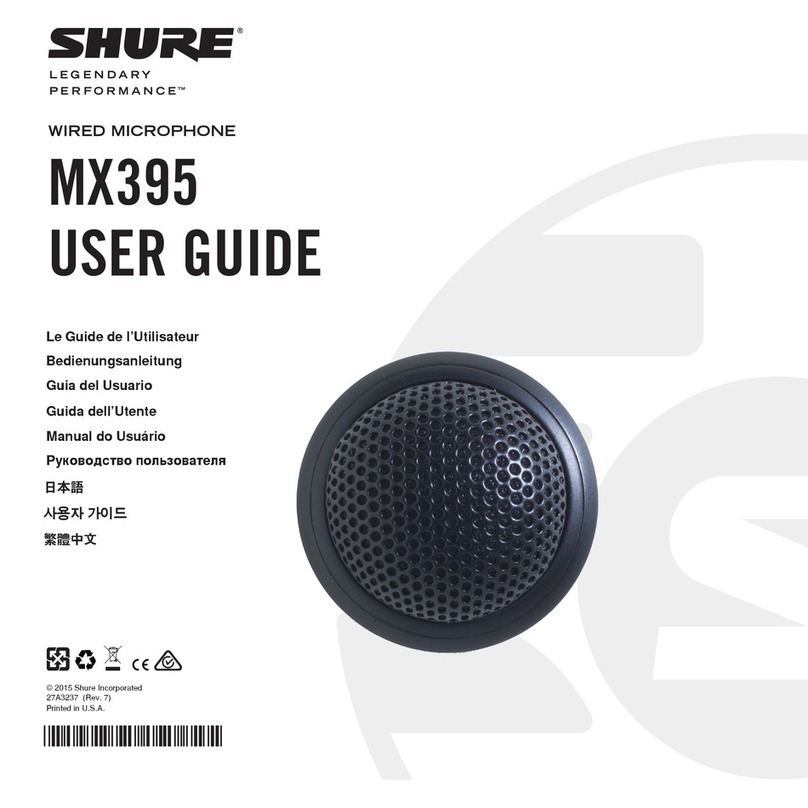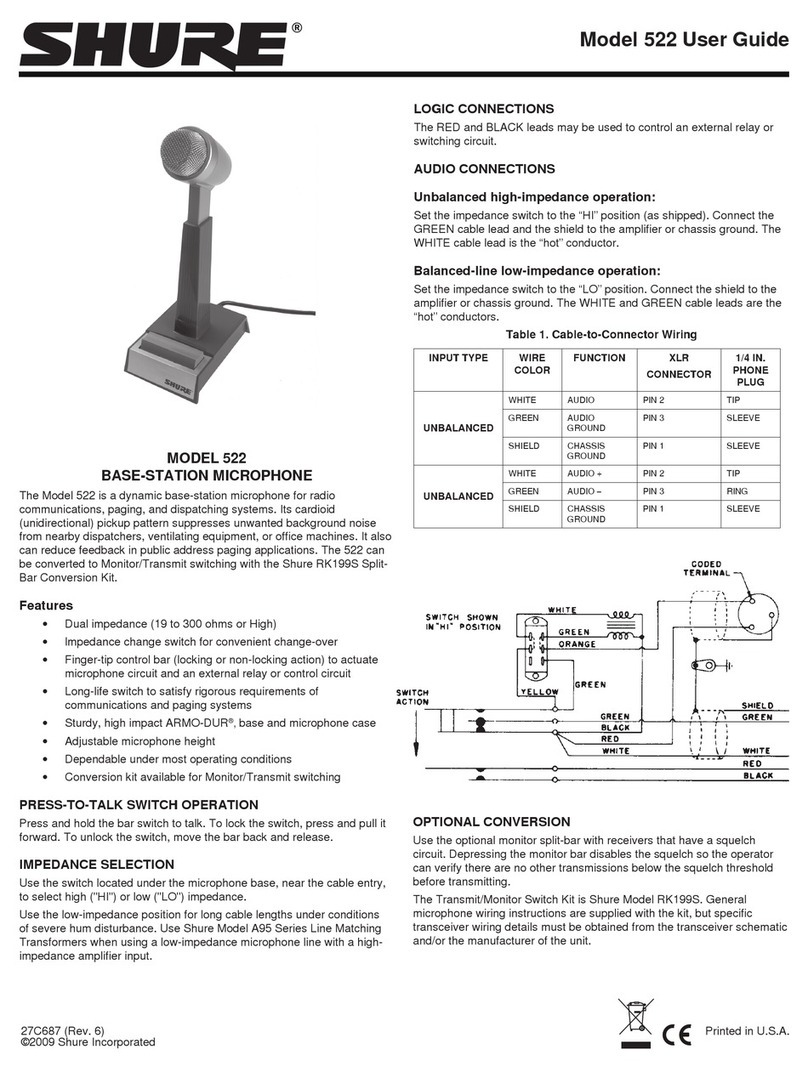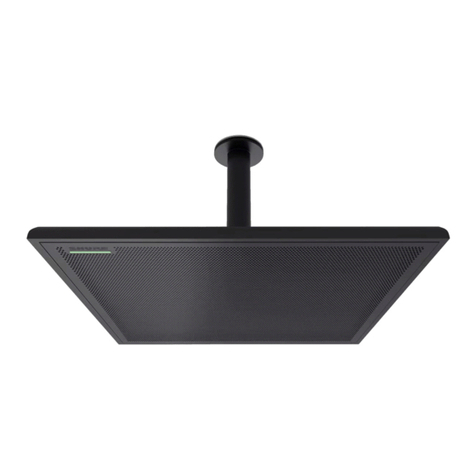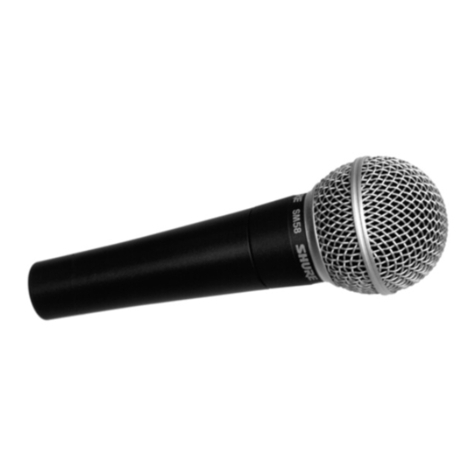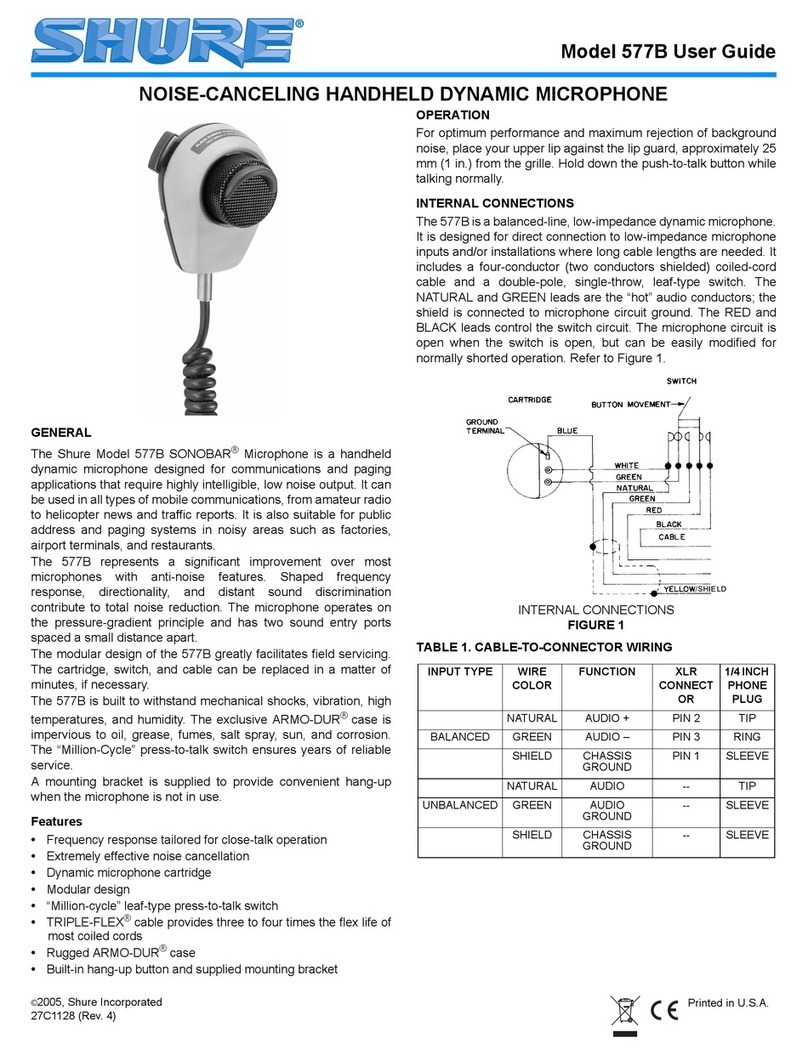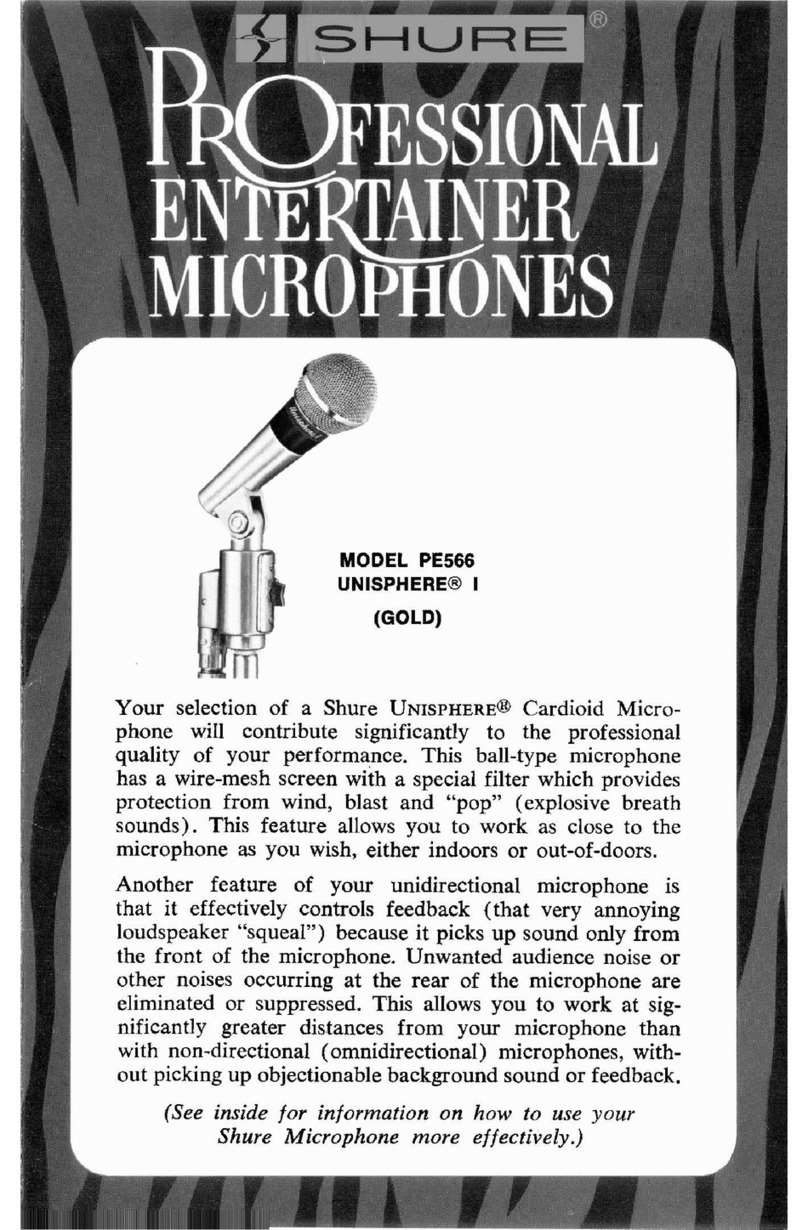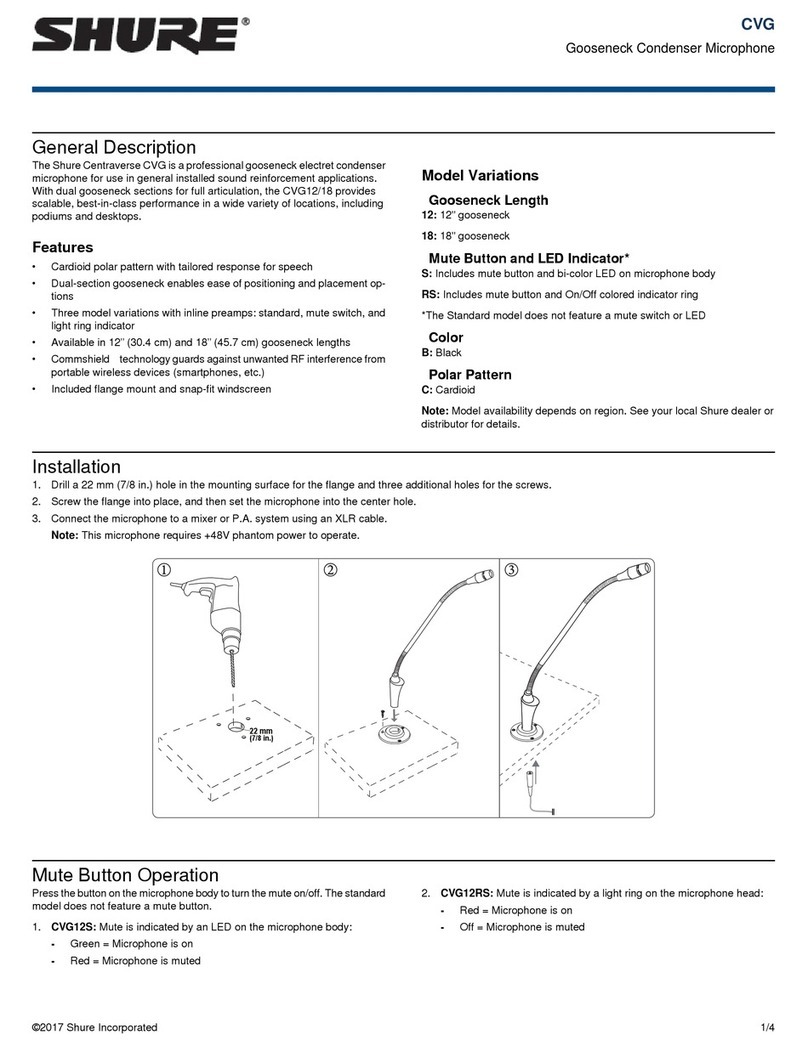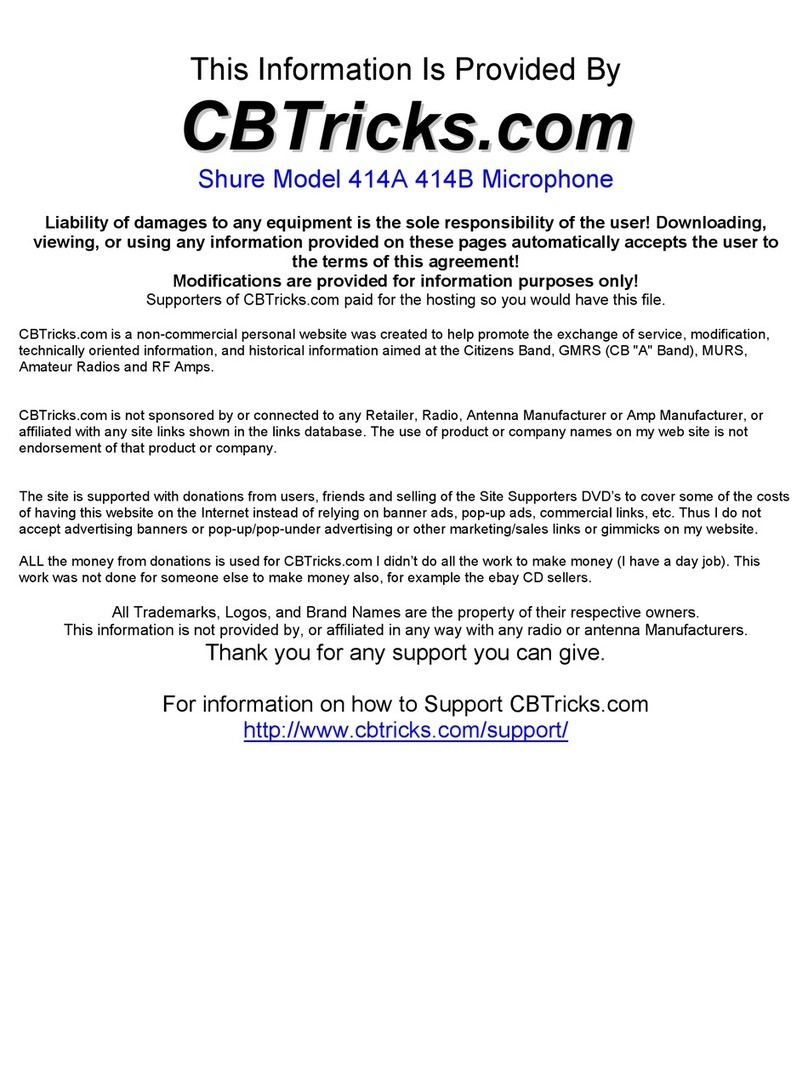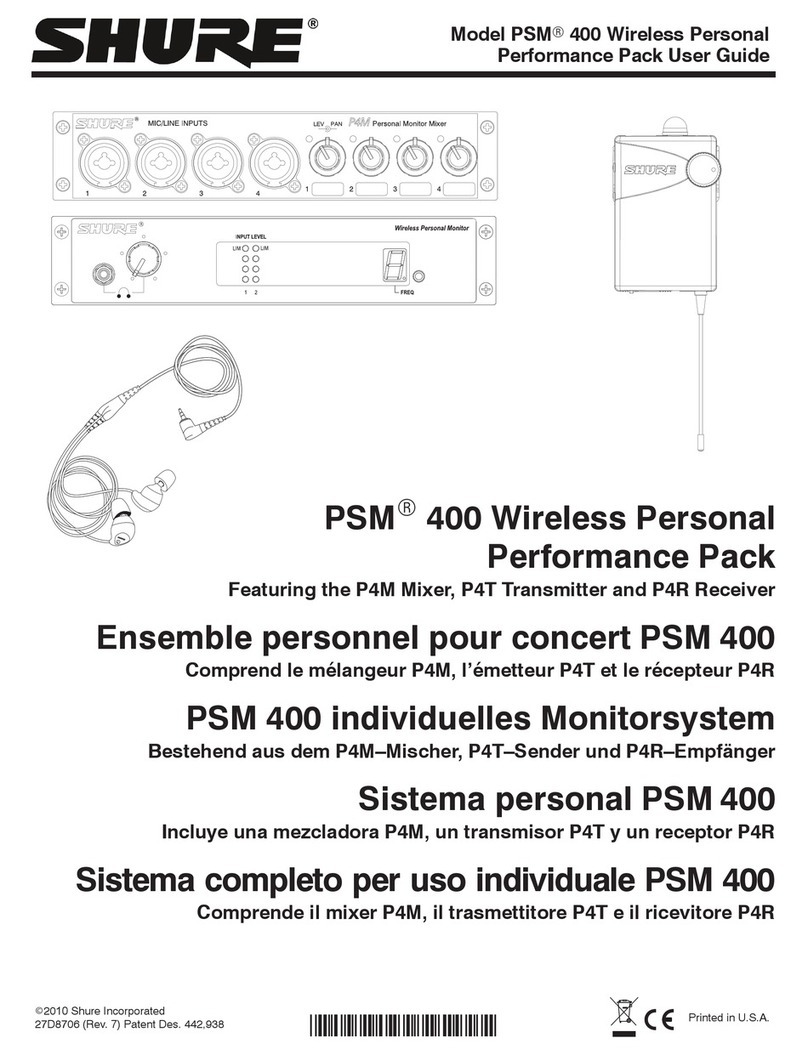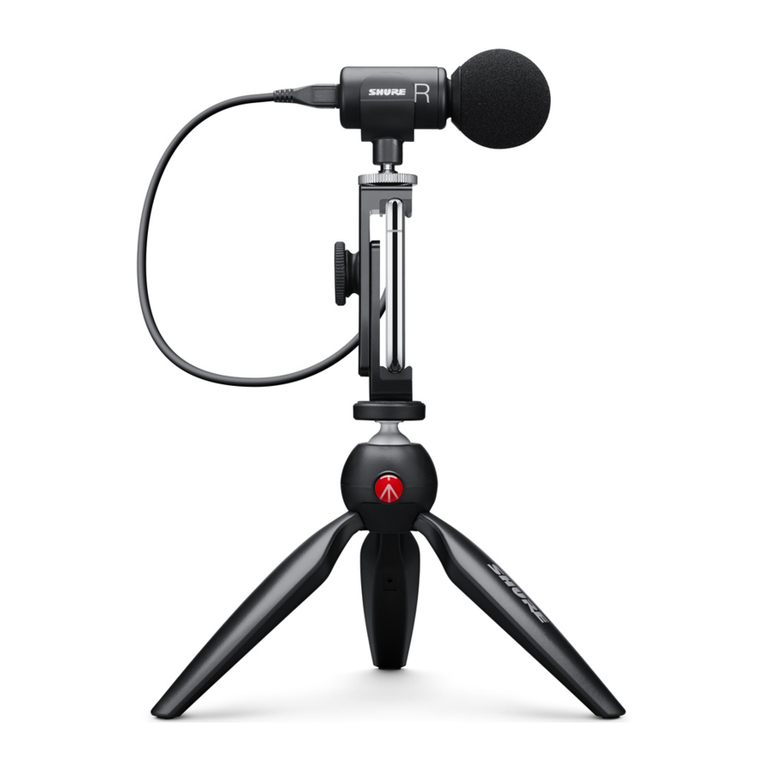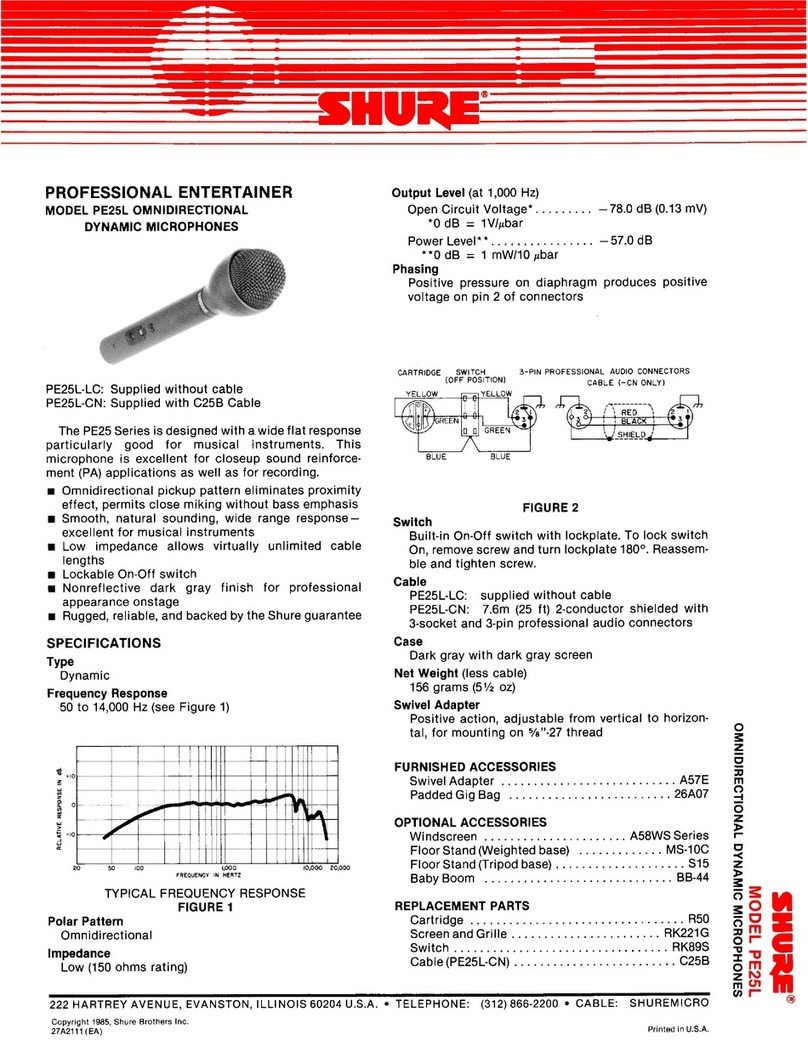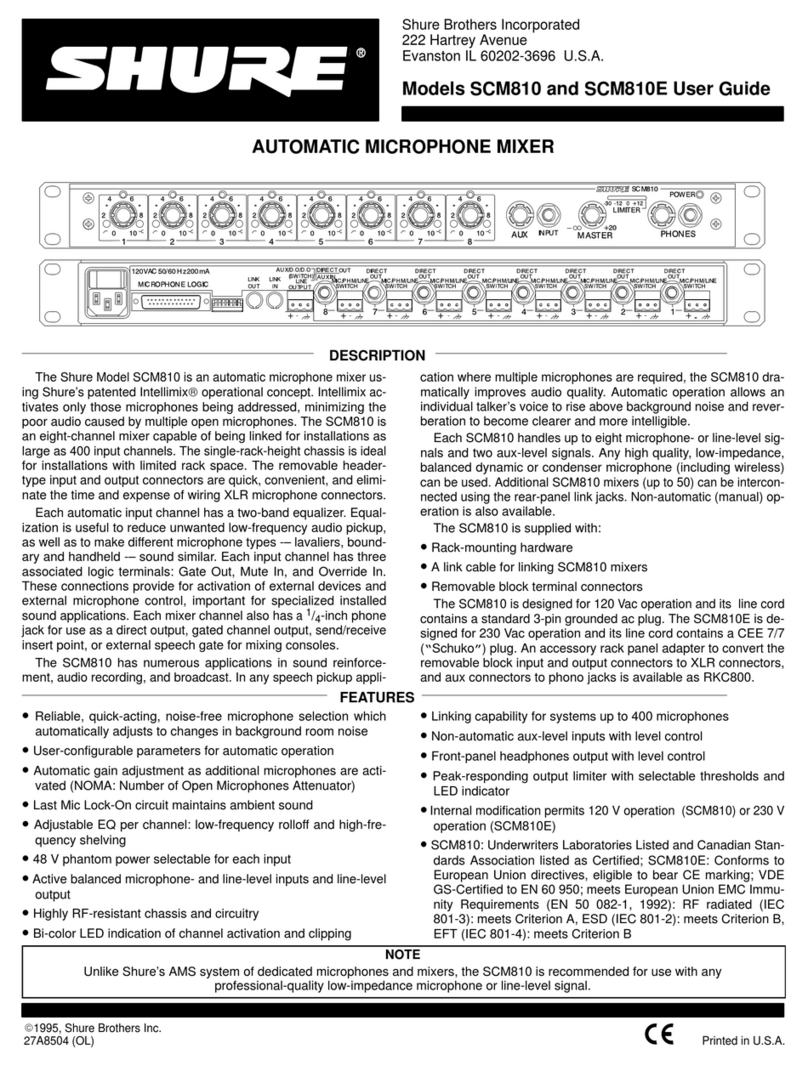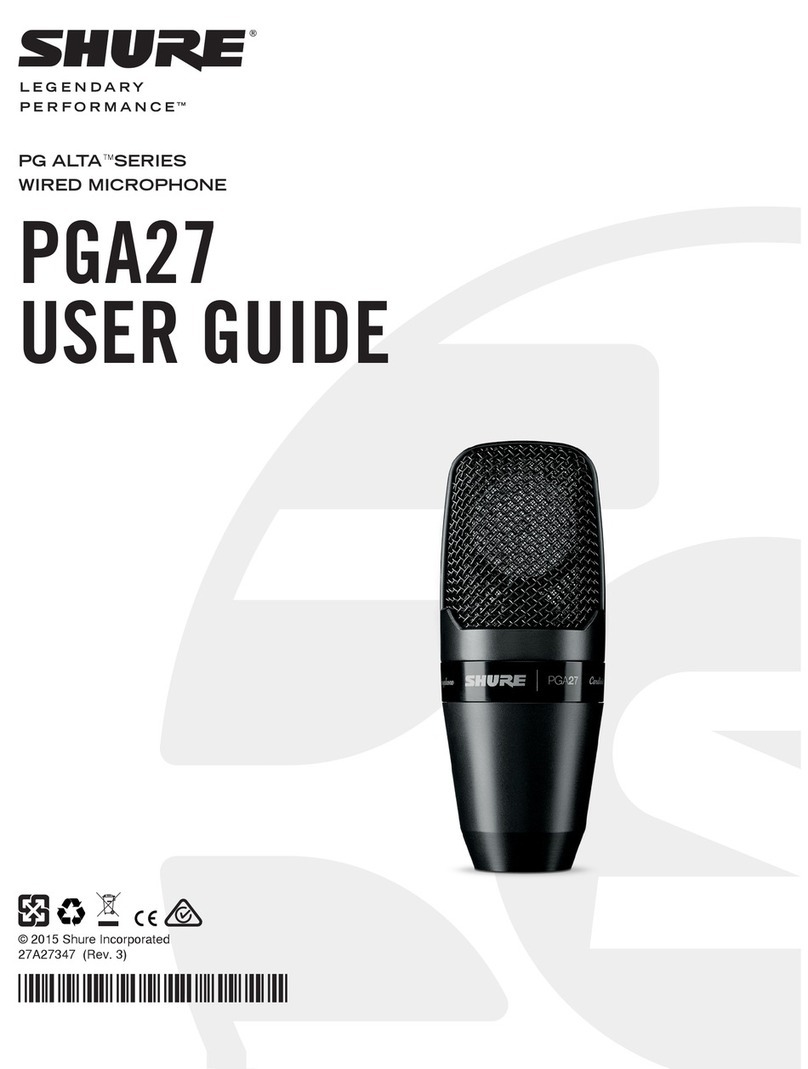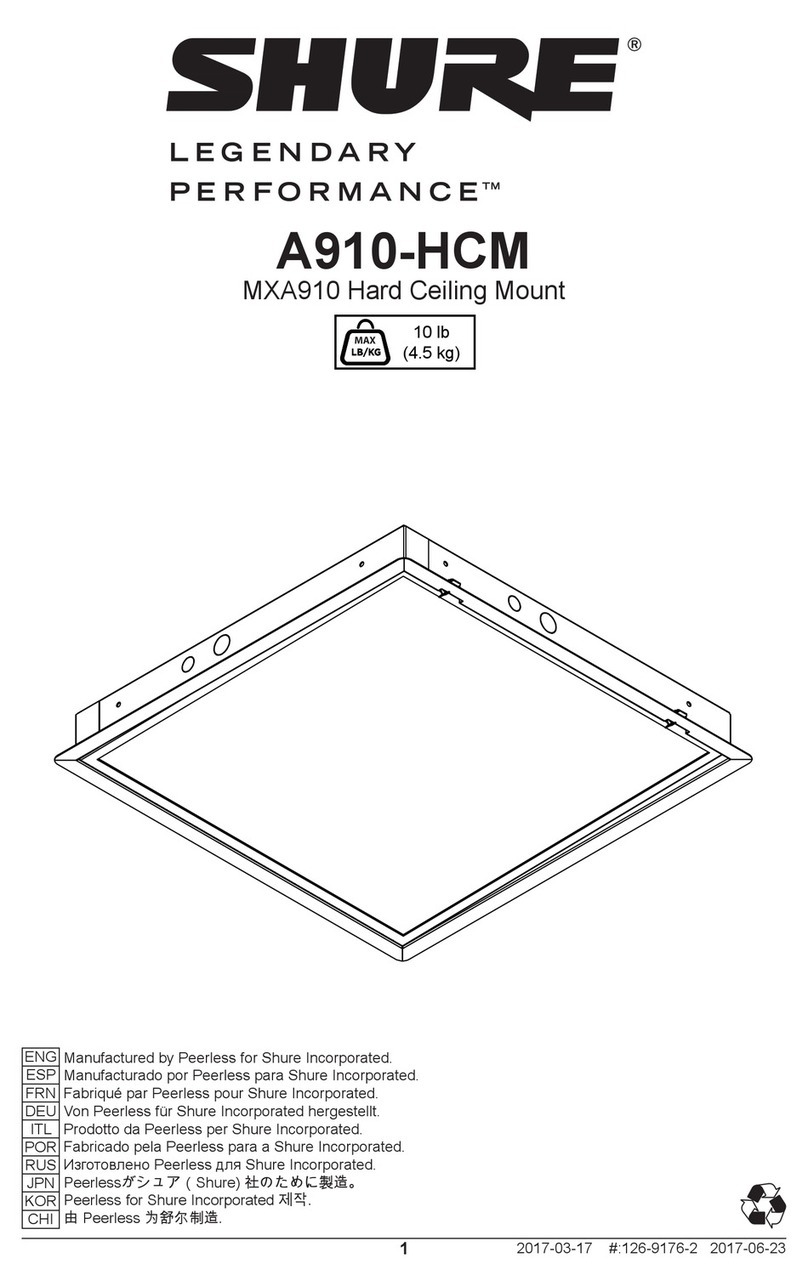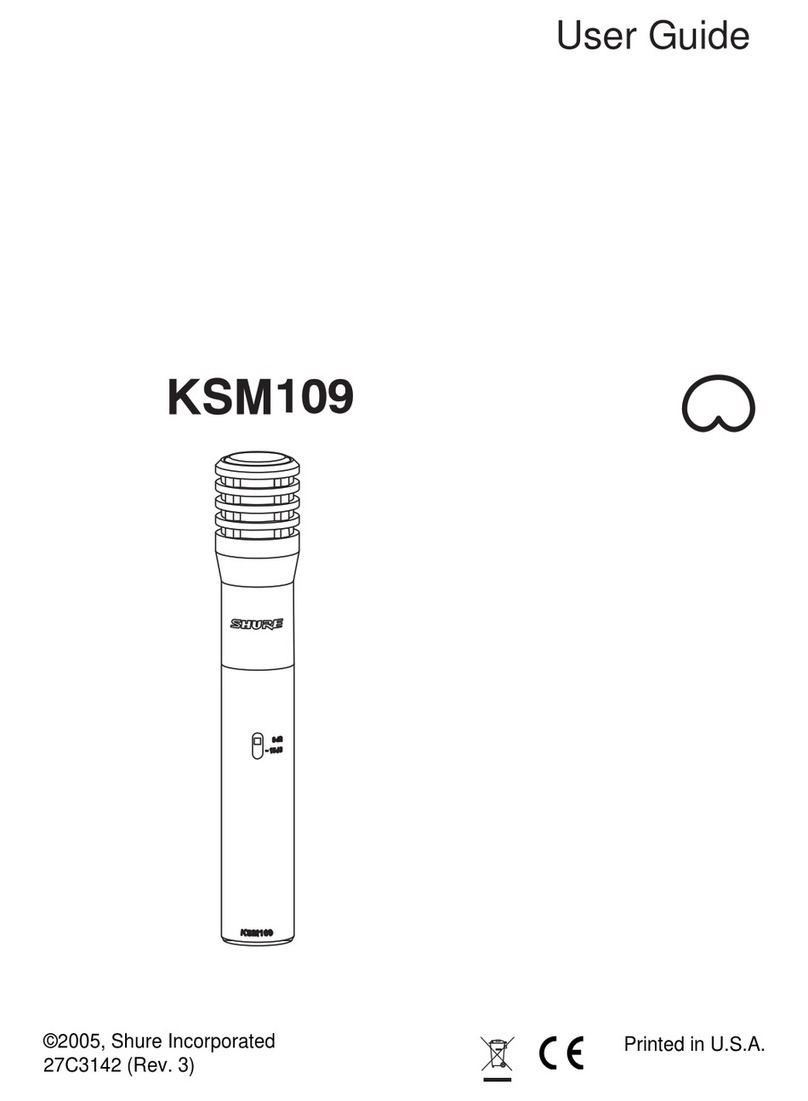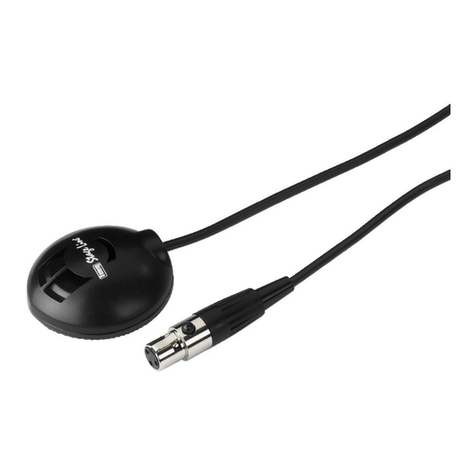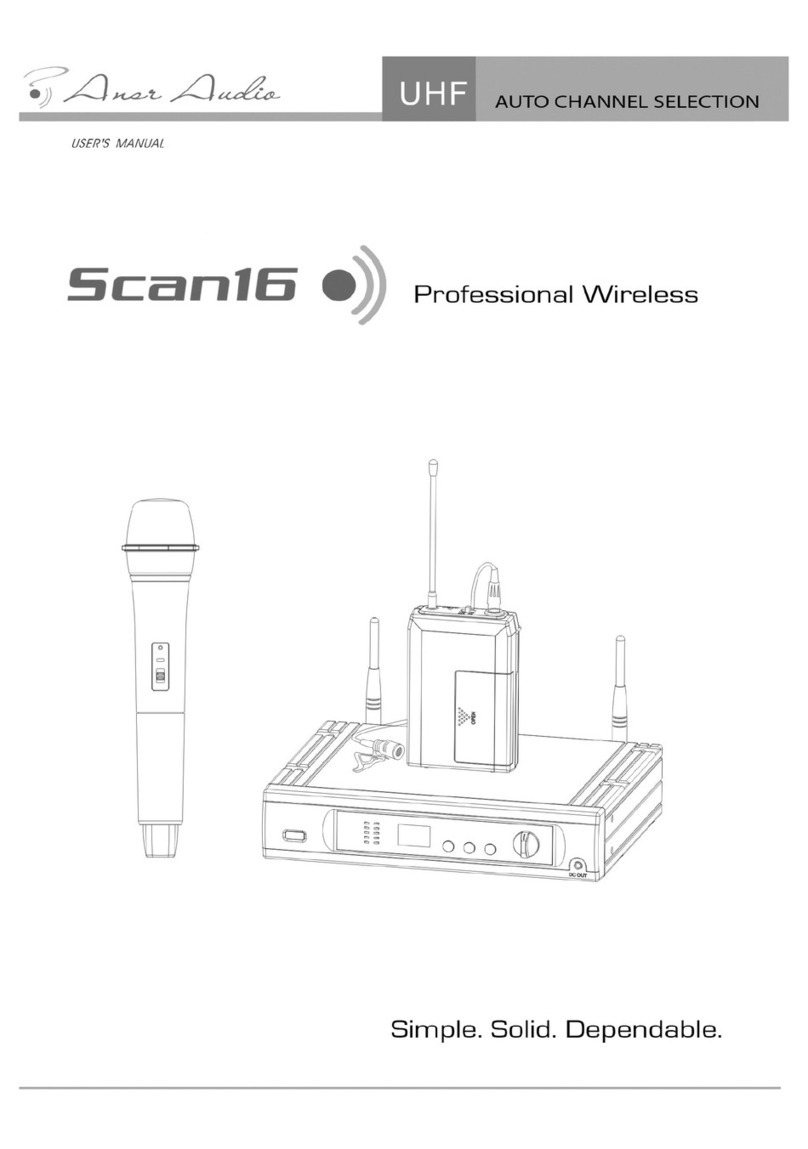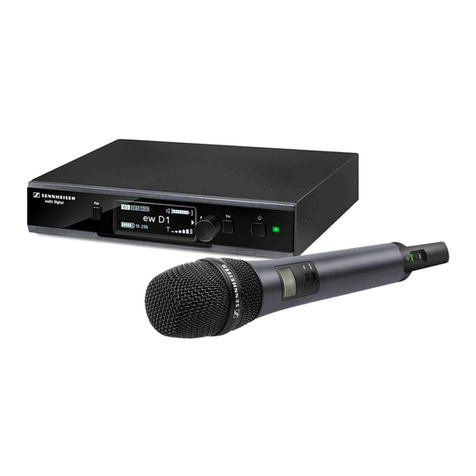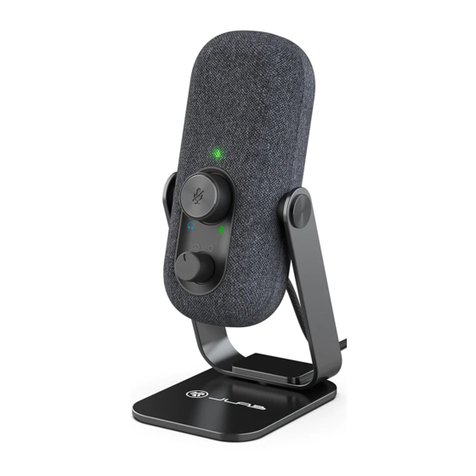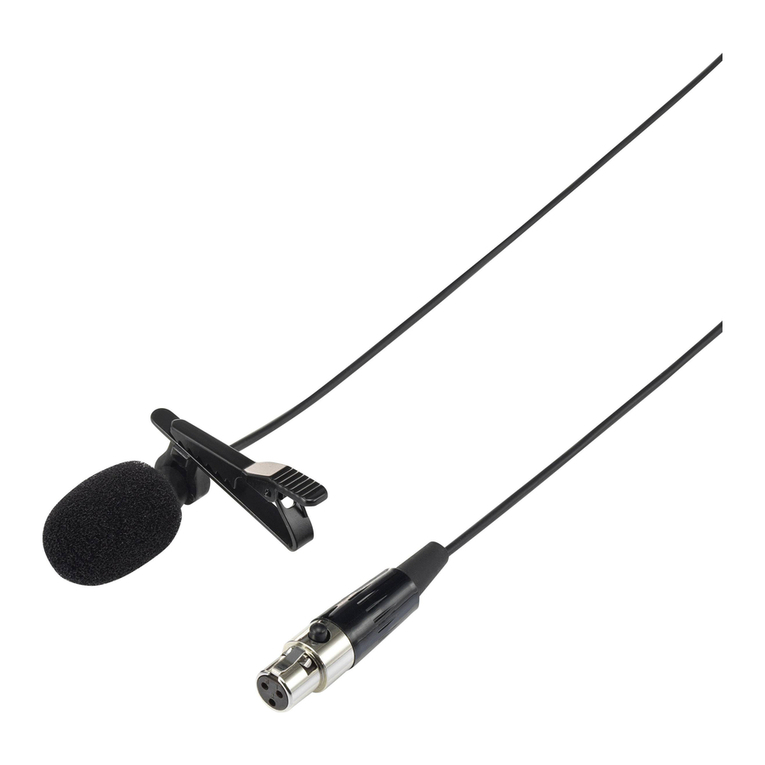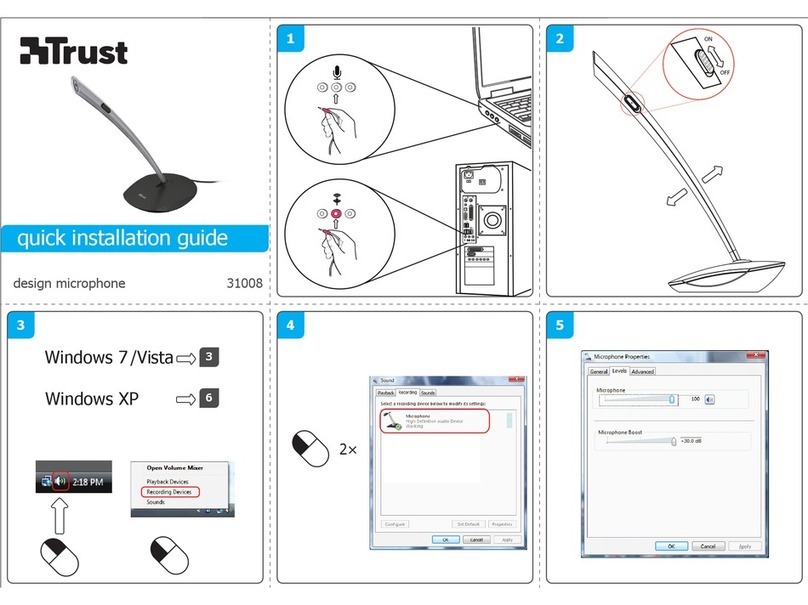
3
Low-Frequency Response Filter
The SM81 has a three-position low-frequency response filter
controlled by a switch located on its handle. The switch is recessed
to avoid accidental movement, but may be easily moved with fin-
gertips. The user may select either flat response, low-frequency
rolloff of 6 dB per octave below 100 Hz, or low-frequency cutoff of
18 dB per octave below 80 Hz (see Figure 4). When close-miking
instruments or vocalists, an increase in low-frequency response
(proximity effect) takes place. Figure 4 illustrates this effect with the
switch in each of the three positions. Note that the low-frequency
response filter may be used to compensate for proximity effect or
reduce low-frequency noise from stage traffic and other sources.
PROXIMITY EFFECT AND COMPENSATION
FIGURE 4
Attenuator Switch
The SM81 has a switchable 10 dB capacitive attenuator to pre-
vent high sound pressure levels from overloading its internal elec-
tronics. The attenuator is engaged by rotating the actuator ring,
located directly below the grille assembly, until it reaches the “-10"
position. This reduces the output of the microphone by 10 dB and
increases the maximum sound pressure level at clipping by 10 dB.
There are no intermediate levels of attenuation available.
The attenuator ring may be locked in either the “0" or “-10" po-
sition as follows. Unscrew the grille and cartridge assembly by un-
screwing counter-clockwise from the top. Turn the actuator ring to
the “0" or “-10" position as desired. Insert the actuator ring lock
(small clear piece of plastic) in the area behind the actuator ring be-
tween the pin and the edge of the slot. This will prevent the ring
from turning. Replace the grill and cartridge assembly.
Mixer Overload
The SM81's output is about 15 dB higher than most dynamic mi-
crophones. At moderate to high SPLs, this additional output may
require attenuation (or padding). If no attenuation is available on
the preamplifier, mixer or console being used, a resistive attenua-
tor can be inserted between the microphone and the input. The
Shure Model A15AS Attenuator (15, 20, or 25 dB switch-select-
able) is specially designed for use with condenser microphones
such as the SM81. Alternately, the attenuator design shown in Fig-
ure 5 may be used. The resistors shown are 1/2-watt, 1% toler-
ance, and the circuit may be packaged in a Switchcraft S3FM
adapter housing. The circuit will provide15 dB of attenuation and
can be used between the SM81 and the PS1A (or other power sup-
ply), or between the PS1A and the mixer. Two of these circuits may
be used in series to provide 30 dB of attenuation. (Note that, due
to excessive loading, commercially available 150 Ωattenuators,
such as the Shure Model A15AS, are not recommended when two
are used in series.)
15 DB ATTENUATOR CIRCUIT
FIGURE 5
Wind Noise
The wide frequency response of the SM81 makes it sensitive to
wind, breath, and air currents from heating, ventilation and cooling
(HVAC) systems. The foam windscreen included with the SM81
can be used to reduce wind and breath noise, while the low-fre-
quency response filter can be used to reduce low-frequency room
noise caused by HVAC systems.
The Model A81G Pop Filter Grille attenuates breath popping
sounds when the microphone is close-talked, and permits its use
outdoors with minimal pickup of rushing and rumbling sounds. To
install the A81G, slip it over the SM81 until the inside of the A81G
touches the top of the microphone. Tighten the A81G by rotating
the knurled collar clockwise from the bottom. (Note: When remov-
ing the A81G, first loosen the knurled collar. Otherwise the car-
tridge will unscrew with the A81G.)
For outdoor use under very windy conditions, use the Model
A81WS large foam windscreen.
20 100050 100
+10
0
–10
Hz
dB
152.4 MM ( )
152.4 MM ( )
152.4 MM ( ) 12
3
1
2
3
412
412
215
OUTPUT TO
MIXER
INPUT FROM
MICROPHONE

